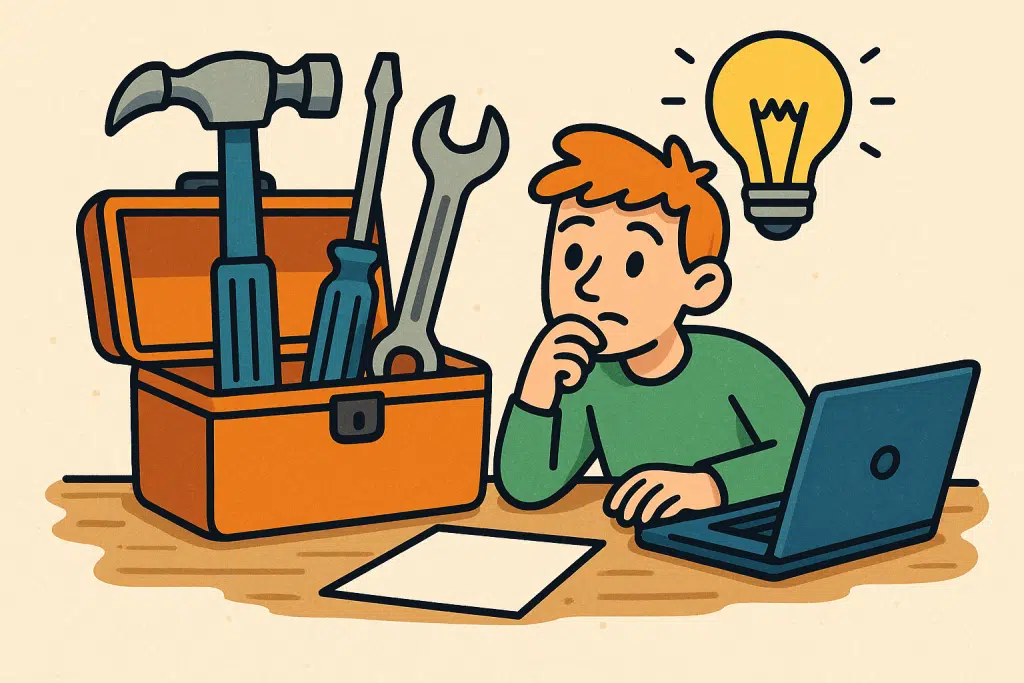Default Tools Shape Idea Quality
Ethan Harris July 28, 2025
AI design assistants are becoming essential for elevating idea quality in modern creative tools. These systems use machine learning and data analytics to help designers generate and refine innovative concepts efficiently. This article explores how they work, why they matter, and where the trend is headed.

Inserting idea quality early helps attract readers interested in design innovation. These tools augment creativity, enabling designers to explore new possibilities and streamline workflows, making them vital for professionals and hobbyists alike.
Why AI Design Assistants Matter for Idea Quality
1. Bridging the Gap from Concept to Execution
Many users struggle translating rough ideas into professional visuals. AI recommendation systems embedded in tools suggest design layouts, color palettes, typography, and visual hierarchy, smoothing the creative process and improving idea quality across skill levels.
2. Speed and Iterative Exploration
Instead of manual experimentation, users can generate dozens of design variations in seconds—testing multiple layouts, image styles, or fonts. That boosts creative volume and allows more refined decision‑making based on real artifacts.
3. Accessibility and Confidence for Non‑Designers
These assistants democratize creative work. For example, GHD’s recent CurlFinder AI quiz guides users toward the right styling tool based on hair texture and styling goals—offering salon‑level personalization without expert knowledge. In creative software, similar intelligent recommendation systems are available in platforms like Canva and Adobe Firefly.
Emerging Examples of AI Recommendation Assistants
Canva + Pinterest Collaboration
Canva has partnered with Pinterest to introduce design templates based on Pinterest Predicts trend insights—such as specific color themes or aesthetic styles personalized for Gen Z users. By surfacing trending visual patterns, Canva helps users start ideas with higher relevance and quality.
Adobe Firefly and Wix AI
Tools such as Adobe Firefly and Wix’s AI‑based website builder use generative and recommendation models to suggest image layouts, content blocks, and branding elements tailored to user input—delivering a more polished final quality faster.
AI‑Powered Resale Platforms
While not traditional design tools, resale platforms like Depop, The RealReal, and Poshmark now apply AI to auto‑generate product descriptions, recommend pricing, and enhance item imagery. These features not only improve marketplace quality but also shape how creative sellers present their products—elevating presentation idea quality in ecommerce contexts.
How AI Assistants Impact Different Creative Tool Categories
| Category | AI Recommendation Feature | How Idea Quality Improves |
|---|---|---|
| Graphic design | Template suggestion, layout refinement | Consistent visual aesthetic, reduced friction |
| Web design | Block and component auto‑placement | Better structure, faster concept proofreading |
| Content creation | Automated branding, tone/style matching | Cohesive brand voice, improved engagement |
| Resale imagery & copy | Auto-descriptions, image enhancement | Elevated presentation, clearer listings |
Practical Guide: Picking the Right AI Assistant
If you’re evaluating tools to improve idea quality in creative workflows, consider these:
Start with your goal
- Designing social posts? Canva + Pinterest templates may help.
- Building a branded site? Try Wix AI or Adobe Firefly.
- Selling online? Platforms like The RealReal or Poshmark use AI to polish how you present products.
Check how they integrate insight
Does the tool use trend data (like Pinterest Predicts) or user-specific info (e.g., hair type, brand tone)? The depth of contextual relevance affects idea quality.
Evaluate output flexibility
Look for tools that let you further customize or refine AI suggestions rather than locking in one result—enhancing final quality through tweakability.
Validate personalization and ownership
Ensure AI‑generated ideas are owned by you and aren’t overly templated. High-quality tools blend AI speed with human control for best results.
Trends and What’s Next
AI at Every Stage: Integration across workflow
Business and marketing experts say AI will become as foundational as HTTP or electricity—underpinning systems invisibly rather than functioning as standalone features.
Cross‑platform continuity
As shown in GHD’s CurlFinder, brands are building AI ecosystems that connect consultation, purchase, and product innovation phases for a seamless user experience. Similarly, creative toolchains will integrate AI across the entire process—from initial brief to final asset creation. These systems will streamline workflows, enable real-time collaboration, and ensure consistency by connecting design tools, project management, and analytics, delivering tailored, efficient outcomes across platforms.
Data‑driven style guidance
Trend-spotting platforms like Pinterest, Google Trends, Exploding Topics, and WGSN are transforming design assistants by tapping into predictive insights. These tools analyze user behavior, search patterns, and cultural shifts to identify emerging trends. By integrating real-time data from social media and search engines, design assistants empower users to create ideas that align with evolving market preferences. This data-driven approach helps designers in fashion, graphics, and more craft work that resonates with current and future audiences.
Getting the Most Value from AI Design Assistants
- Start with a clear creative brief – Input accurate preferences (brand colors, fonts, tone) so AI suggestions align.
- Explore multiple variations – Use AI-generated options as dimensions for exploration, not final answers.
- Refine real‑world context – Incorporate feedback from team members or test groups to ensure ideas hold up in practice.
- Train your eye – Over time you’ll learn to recognize which AI suggestions align with your goals and which require manual tuning.
Challenges and Caveats
- Over‑standardization
Relying too heavily on templates or trend-driven suggestions may dilute originality. Balance with custom work. - Data privacy and authenticity
As tools use user or trend data, transparency about data use and ownership becomes critical—especially in professional contexts. - Quality inconsistency
Some AI systems still produce uneven output, especially in edge cases. Human review remains crucial.
Conclusion
AI‑powered creative‑design assistants are redefining what “quality” means in ideation. They offer faster, more professional results, especially for non‑designers or teams working with tight deadlines. By blending predictively sourced trends, personalization, and flexible recommendations, these tools raise the bar in idea quality, helping concepts evolve into compelling visuals with less friction.
Looking ahead, the most successful tools will be those that let AI accelerate creativity—not replace it. They’ll guide early visions while still leaving room for personalization, critical judgement, and human uniqueness.
References
Labroo, A. A. & Schwarz, N. (2009). The Effect of Conceptual and Perceptual Fluency on Brand Evaluation. Journal of Marketing Research. Retrieved from https://www.bohrium.com
Hu, S. & Borji, A. (2018). Understanding Perceptual and Conceptual Fluency at a Large Scale. In ECCV 2018 Proceedings. Retrieved from https://www.ecva.net
Löwgren, J. (2007). Fluency as an Experiential Quality in Augmented Spaces. International Journal of Design, 1(3), 1–10. Retrieved from https://www.ijdesign.org







